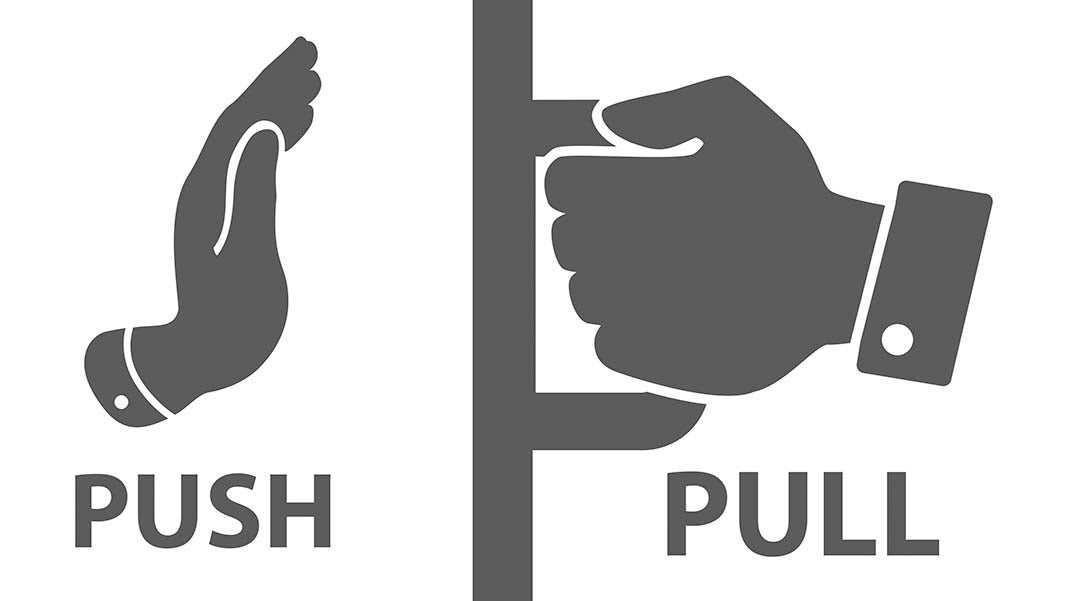
More and more customers these days are doing their own marketing research, scanning internet reviews and feedback from friends, rather than trusting messages that you push out through advertising. This is called inbound marketing, where customers are pulled to you, rather than feeling accosted at every turn by your brand messages via email, newspapers and television.
Inbound marketing is all building two-way virtual relationships, which are the norm for today’s generation via social media, mobile apps, recommendations from “friends” and influencers, modern websites with customer-focused content, friendly forums, and chat bots. If you have yet to get started, here are some key steps that I recommend to my advisory business clients:
- Actively engage customers via top social media sites. Recently I was surprised to find that up to 25 percent of businesses still don’t use social media at all, and many more only monitor it, but rarely engage. I recommend that you experiment to find the best sites for your business, with the majors including Twitter, Facebook, Instagram and YouTube.
- Update your website to make it totally customer-focused. A quick scan of the Internet today will convince you that many sites are still product-centric, technology focused, and haven’t been updated for years. Today people want to see customer needs highlighted, mobile friendly, recommendations from prior customers, and interactive help channels.
- Provide mobile device apps and interactive support. As American customers with smartphones now exceed 80 percent, and adults spending more time on mobilethan watching TV, the advantages of mobile device support continue to increase. Inbound marketing requires that you be where your customers are, or they won’t find you or care.
- Highlight and practice a commitment to a higher purpose. Customers are pulled to companies that are role models for saving the environment, fostering social change, and giving back to the less advantaged. For example, Whole Foods pulls in customers by highlighting their efforts to sustain the environment and ensure humane animal treatment.
- Become a thought leader and influencer in your domain. Be creative and add value to what you offer your target audience, without calling it marketing. Adding value builds influence and subsequently can build your business, as well as your Klout score. Customers love to learn from leaders and innovators, and this pulls them in for sales.
- Provide memorable total customer experience relationships. Customers are pulled in by differentiators that go well beyond the product, including ease of shopping, ordering, delivery, customer reviews, and personalization. Your overall customer experience will trump product features every time, in terms of loyalty, trust, and return visits.
- Establish partnerships with recognized pull businesses. Pursue collaborations with local and national organizations and businesses who are good at inbound marketing, to pull in their customers and followers. Develop and learn from shared marketing efforts, trade-show booths, co-branding promotional products, and referral agreements.
- Implement marketing metrics based on inbound data. Inbound marketing data, including site page visits, blog reads, inbound links, and e-commerce orders linked to content are much more relatable to return-on-investment (ROI) than email blasts, banner-ad views, and TV show ratings. Take advantage of new automated tools in this area.
- Consistently deliver updated and valuable content. Companies that haven’t updated their website for years, or publish a new blog only sporadically, won’t be followed or pull in new customers. The key is consistency. In this context, content is like advertising, unless customers want to see you every day, they won’t remember anything about you.
In fact, I believe that inbound or pull marketing is just the first of several waves of change in the world of digital marketing, where customers are in charge. Customers now feel immune to most marketing influences, except the ones they initiate. Your challenge is to deliver your message in the context of customer value, and build relationships, without anyone feeling a push.












